
Pope Honorius IV, born Giacomo Savelli, was head of the Catholic Church and ruler of the Papal States from 2 April 1285 to his death, in 1287. During his pontificate he largely continued to pursue the pro-French political policy of his predecessor, Martin IV.
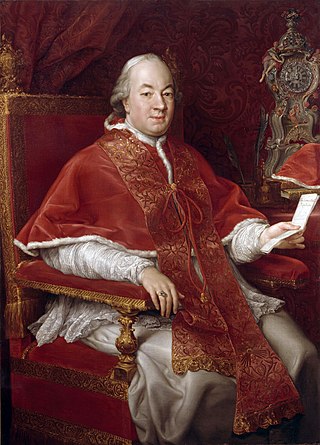
Pope Pius VI was head of the Catholic Church and ruler of the Papal States from 15 February 1775 to his death in August 1799.

Pope Pius VII was head of the Catholic Church from 14 March 1800 to his death in August 1823. He ruled the Papal States from June 1800 to 17 May 1809 and again from 1814 to his death. Chiaramonti was also a monk of the Order of Saint Benedict in addition to being a well-known theologian and bishop.
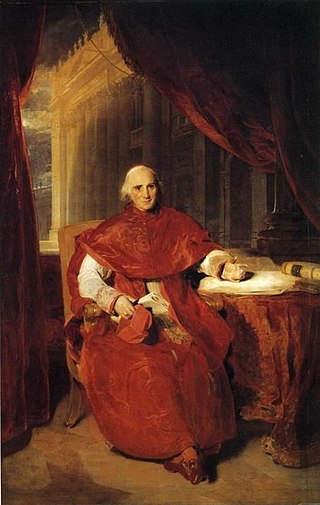
Ercole Consalvi was a deacon and cardinal of the Catholic Church, who served twice as Cardinal Secretary of State for the Papal States and who played a crucial role in the post-Napoleonic reassertion of the legitimist principle of the divine right of kings, of which he was a constant supporter.

Francesco Marchetti Selvaggiani was an Italian cardinal of the Catholic Church who served as Secretary of the Congregation for the Propagation of the Faith, Vicar General of His Holiness, Secretary of the Holy Office, and Dean of the College of Cardinals. He was elevated to the cardinalate in 1930.
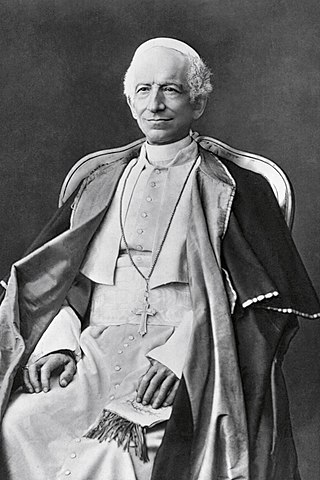
The papal conclave held from 18 to 20 February 1878 saw the election of Vincenzo Pecci, who took the name Leo XIII as pope. Held after the death of Pius IX, who had had the longest pontificate since Saint Peter, it was the first election of a pope who would not rule the Papal States. It was the first to meet in the Apostolic Palace in the Vatican because the venue used earlier in the 19th century, the Quirinal Palace, was now the palace of the king of Italy, Umberto I.

Alessandro Albani was a Roman Catholic cardinal remembered as a leading collector of antiquities, dealer and art patron in Rome. He supported the art historian, Johann Joachim Winckelmann and commissioned paintings from Anton Raphael Mengs. As a cardinal he furthered the interests of the governments of Austria, Savoy and Britain against those of France and Spain; he was a noted jurist and papal administrator in his earlier career. Upon his death he was the last cardinal created by Pope Innocent XIII.

Massimo Massimi was an Italian cardinal of the Roman Catholic Church who served as Prefect of the Apostolic Signatura in the Roman Curia from 1946 until his death, and was elevated to the cardinalate in 1935.

Gaetano Bisleti S.T.D. was a Cardinal of the Roman Catholic Church and was former Prefect of the Sacred Congregation for Catholic Education.

Vincenzo Lapuma was an Italian Cardinal of the Catholic Church. He spent forty years in the Roman Curia and served as prefect of Sacred Congregation for Religious from 1935 until his death. He was raised to the rank of cardinal in 1935.

Louis-Siffren-Joseph de Salamon was a French Bishop of Saint-Flour, and papal diplomat of the period of the French Revolution.
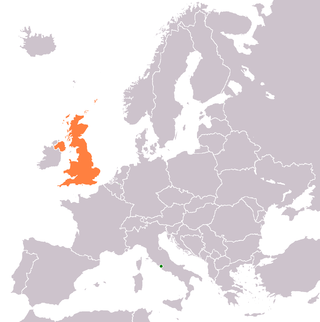
Holy See–United Kingdom relations are foreign relations between the Holy See and the United Kingdom.
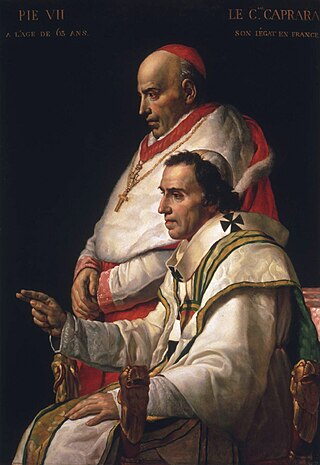
The relationship between Napoleon and the Catholic Church was an important aspect of his rule.

The Cardinal protector of England was an appointed crown-cardinal of England from 1492 until 1539. A cardinal protector is the representative of a Roman Catholic nation or organisation within the College of Cardinals, appointed by the pope. The role was terminated as a result of the English Reformation.
Andrea Negroni was an Italian Cardinal who was Cardinal-Deacon of the titular Church of Santi Vito, Modesto e Crescenzio from 1765 to 1779.
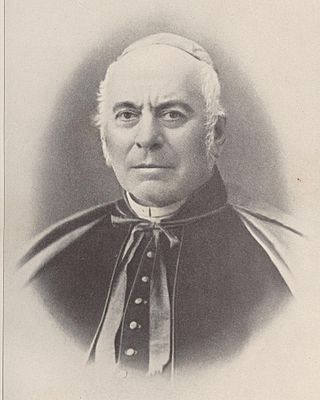
Teodolfo Mertel was a lawyer, deacon, and cardinal of the Roman Catholic Church. He was the last cardinal not to have been ordained at least a priest.

Francesco Maidalchini was an Italian Cardinal of the Roman Catholic Church.

Gianfrancesco Gambara (1533–1587) was an Italian Roman Catholic cardinal and bishop.

Girolamo Rusticucci was an Italian Roman Catholic cardinal and bishop. He was personal secretary to Cardinal Michele Ghislieri, later Pope Pius V, who made Rusticucci a cardinal. He occupied numerous important positions, including papal legate to France and Spain, Camerlengo (treasurer) and Vice-Dean of the College of Cardinals, and Vicar General of Rome.
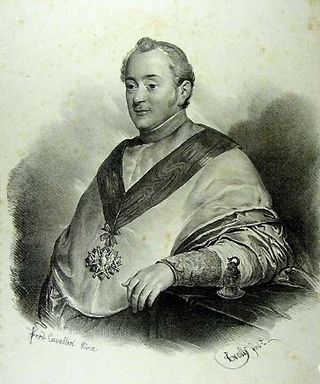
Tommaso Bernetti was an Italian Roman Catholic prelate and cardinal who served in the Secretariat of State and the Roman Curia during his time in the cardinalate. He came from Fermo and was named a cardinal in 1826 before beginning his work in the Curia. He had worked prior to his time in the cardinalate as a papal legate and governor with a dispensation for not having been a priest at that point.


















